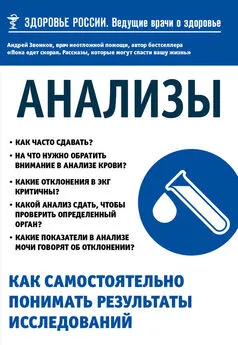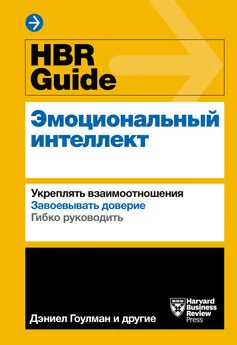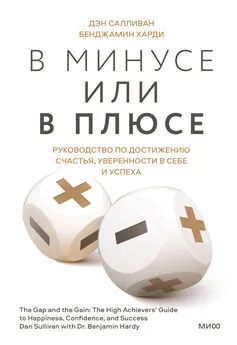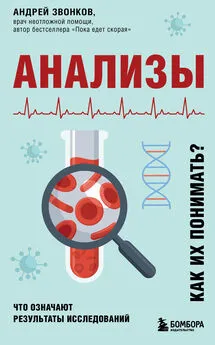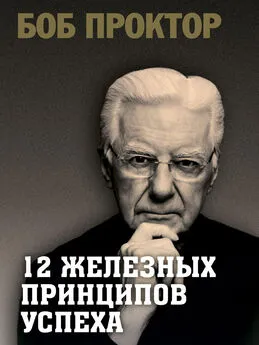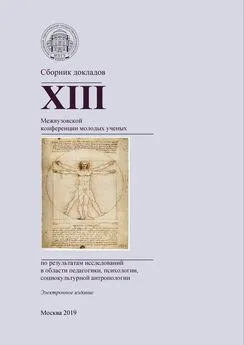Шон Ачор - Преимущество счастья. 7 принципов успеха по результатам исследований компаний из списка Fortune
- Название:Преимущество счастья. 7 принципов успеха по результатам исследований компаний из списка Fortune
- Автор:
- Жанр:
- Издательство:Эксмо
- Год:2014
- ISBN:нет данных
- Рейтинг:
- Избранное:Добавить в избранное
-
Отзывы:
-
Ваша оценка:
Шон Ачор - Преимущество счастья. 7 принципов успеха по результатам исследований компаний из списка Fortune краткое содержание
Преимущество счастья. 7 принципов успеха по результатам исследований компаний из списка Fortune - читать онлайн бесплатно полную версию (весь текст целиком)
Интервал:
Закладка:
12. Индекс благополучия американских граждан (Gallup-Healthways Well-Being Index) за 2008 г. Источник: Associated Press (June 18, 2008). Poll: Unhappy workers take more sick days.
13. Cohen S., Doyle W.J., Turner R.B., Alper C.M., Skoner D.P. Emotional style and susceptibility to the common cold // Psychosomatic Medicine , № 65, 2003, pp.652–657
14. Fredrickson B.L. What good are positive emotions?// Review of General Psychology , № 2, 1998, pp.300–319; The role of positive emotions in positive psychology: The broaden-and-build theory of positive emotions // American Psychologist , № 56, 2001, pp.218–226
15. Fredrickson B.L, Branigan C. Positive emotions broaden the scope of attention and thought-action repertoires // Cognition and Emotions , № 19, 2005, pp.313–332
16. Schmitz T.W., De Rosa E., Anderson A.K. Opposing influences of affective state valence on visual cortical encoding // Journal of Neuroscience , № 29, 2009, pp.7199–7207
17. Gallagher W. Rapt: Attention and the Focused Life – New York: Penguin, 2009, p.36
18. Master J.C., Barden R.C., Ford M.E. Affective states, expressive behavior, and learning in children // Journal of Personality and Social Psychology , № 37, 1979, pp.380–390
19. Bryan T., Bryan J. Positive mood and math performance // Journal of Learning Disabilities , № 24, 1991, pp. 490–494
20. Kopelman S., Rosette A.S., Thompson L. The three faces of Eve: Strategic displays of positive, negative and neutral emotions in negotiations // Organizational Behavior and Human Decision Processes , № 99, 2006, pp.81–101
21. Estrada C.A., Isen A.M., Young M.J. Positive affect facilitates integration of information and decreases anchoring in reasoning among physicians // Organizational Behavior and Human Decision Processes , № 72, 1997, pp.117–135
22. Fredrickson B.L., Mancuso R.A., Branigan C., Tugade M.M. The undoing effect of positive emotions // Motivation and Emotion , № 24, 2000, pp.237–258
23. Fredrickson B.L. The role of positive emotions in positive psychology: The broaden-and-build theory of positive emotions // American Psychologist , № 56, 2001, pp.218–226 – p.222
24. Lyubomirsky S., Sheldon K., Schade D. Pursuing happiness: the architecture of sustainable change // Review of General Psychology , № 9, 2005, pp.111–131
25. Winter A. The science of happiness // The Sun Magazine , May 2009
26. Lyubomirsky S. The How of Happiness – New York: Penguin, 2007, p.70
27. Shapiro S.L., Schwartz G.E.R., Santerre C. Meditation and positive psychology // Snyder C.R., Lopez S.J. (Eds.) Handbook of Positive Psychology – New York: Oxford University Press, 2005, pp.632–645
28. От одного только предвкушения радостного смеха уровень эндорфинов повышается на 27 %, а уровень ГРЧ (гормона роста) – на 87 %. По данным Американского психологического общества // Источник: www.physorg.com/news63293074.html
29. Post S.G. Altruism, happiness and health: It’s good to be good // International Journal of Behavioral Medicine , № 12, 2005, pp.66–77; Schwartz et al. Altruistic social interest behaviors are associated with better mental health // Psychosomatic Medicine , № 65, 2003, pp.778–785
30. Lyubomirsky S. The How of Happiness . New York: Penguin, 2007, pp.127–129
31. Keller M.C., Fredrickson B.L. et al. A warm heart and a clear head: The contingent effects of mood and weather on cognition // Psychological Science , № 16, 2005, pp.724–731
32. Gerber G.L., Gross et al. The «main-streaming» of America: Violence profile № 11 // Journal of Communication , № 30, 10–29. Цит. по: Fredrickson B. Positivity – New York: Crown Publishers, 2009, p.173
33. Babyak M., Blumenthal J., Herman S., Khatri P., Doraiswamy P., Moore K., Craighead W., Baldewicz T., Krishman K. Exercise treatment for major depression: Maintenance of therapeutic benefit at ten months // Psychosomatic Medicine , № 62, 2000, pp.633–638
34. Frank R.H. Luxury Fever – New York: Princeton University Press, 2000
35. Landau E. Study: Experiences make us happier than possessions // CNN.com, February 10, 2009. Источник: www.cnn.com. Более глубокое обсуждение психологических преимуществ ощущений над материальными благами можно найти в статье: Van Boven L., Gilovich T. To do or to have? That is the question // Journal of Personality and Social Psychology , № 85(6), 2003, pp.1193–1202
36. Dunn E., Aknin L.B., Norton M.I. Spending money on others promotes happiness // Science , № 319, 2008, pp.1677–1688
37. См. онлайн-анкету для выявления сильных сторон личности VIA Signature Strengths Assessment на сайте Пенсильванского университета www.authentichappiness.sas.upenn.edu/testcenter.aspx
38. Seligman M.E.P., Steen T.A., Park N., Peterson C. Positive psychology progress: Empirical validation of interventions // American Psychologist , № 60, 2005, pp.410–421
39. Loehr J., Schwartz T. The Power of Full Engagement: Managing Energy, Not Time, Is the Key to Performance and Personal Renewal – New Yoork: Free Press, p.65
40. Connelly J. All together now // Gallup Management Journal , № 2, 2002, pp.12–18
41. Greenberg M.H., Arakawa D. Optimistic managers and their influence on productivity and employee engagement in a technology organization (2006). Цит. по: Robinson J. The Business of positive leadership // Gallup Management Journal, May 10, 2007
42. Дополнительную информацию о том, что нас больше всего мотивирует, см. в книге Deci E.L. Why We Do What We Do – New York: Penguin, 1996
43. Kjerulf A. Happy Hour is 9 to 5 – Lulu Publishing, 2006
44. Conley J. Peak: How Great Companies Get Their Mojo From Maslow – New York: Jossey-Bass, 2007
45. Barsade S.G. The ripple effect: Emotional contagion and its influence on group behavior // Administrative Science Quarterly , № 47, 2002, pp.644–675
46. Bachman W. Nice guys finish first: A SYMLOG analysis of U.S. Naval Commands // Polley R.B. et al (Eds.) The SYMLOG Practitioner: Applications of Small Group Research – New York: Praeger, 1988. Цит. по: Goleman D. Working with Emotional Intelligence – New York: Bantam, 1998, p.188
47. Losada M. The complex dynamics of high performance teams // Mathematical and Computer Modeling , № 30, 1999, pp.179–192; Losada M., Heaphy E. The role of positivity and connectivity in the performance of business teams: A nonlinear dynamics model // American Behavioral Scientist , № 47 (6), 2004, pp.740–765; Fredrickson B.L., Losada M. Positive affect and the complex dynamics of human flourishing // American Psychologist , № 60 (7), 2005, pp.678–686. Более подробную информацию об интереснейших исследованиях М.Лосады и его сотрудничестве с Барбарой Фредриксон см. в книге Fredrickson B. Positivity – New York: Crown Publishers, 2009, pp. 120–13848. Losada M. Work teams and the Losada Line: New results // Positive Psychology News Daily, December 9, 2008. Источник: http://positivepsychologynews.com/news/guest-author/200812091298
Принцип 2. Точка опоры и рычаг
1. Langer E. Counterclockwise: Mindful Health and the Power of Possibility – New York: Ballantine, 2009
2. Blakesle S. Placebos prove so powerful even experts are surprised // New York Times , October 13, 1998
3. Там же
4. Там же
5. Crum A.J. and Langer E.J. Mindset matters: Exercise and the placebo effect // Psychological Science , № 18(2), 2007, pp.165–171
6. Saks A.M. Longitudinal filed investigation of the moderating and mediating effects of self-efficacy on the relationship between training and newcomer adjustment // Journal of Applied Psychology , № 80(2), 1995, pp.211–225
7. Shih M., Pittinsky T., Ambady N. Stereotype susceptibility: Identity salience and shifts in quantitative performance // Psychological Science , № 10, pp.80–83
8. Dillon S. Study sees an Obama effect as lifting black test-takers // New York Times , January 22, 2009
9. Dweck C.S. Mindset: The New Psychology of Success – New York: Ballantine, 2006, p.7
10. Blackwell L.S., Trzesniewski K.H., Dweck C.S. Implicit theories of intelligence predict achievement across an adolescent transition: A longitudinal study and an intervention // Child Development , № 78(1), 2007, pp.246–263
11. Dweck C.S. Mindset: The New Psychology of Success – New York: Ballantine, 2006, p. 17
12. Lyubomirsky S., Sheldon K., Schade D. Pursuing happiness: the architecture of sustainable change // Review of General Psychology , № 9, 2005, pp. 111–131
13. Lyubomirsky S. The How of Happiness – New York: Penguin, 2007, p.15
14. Wrzesniewski A., McCauley C., Rozin P., Schwartz B. Jobs, careers, and callings: People’s relations to their work // Journal of Research in Personality , № 31, 1997, pp. 21–33
15. Дополнительную информацию о создании работы можно найти в статье: Wrzesniewski A., Dutton J. Crafting a job: Revisioning employees as active crafters of their work // Academy of Management Review , № 26(2), 2001, pp.179–201
16. Wrzesniewski A. Finding positive meaning in work // Cameron K.S., Dutton J.E., Quinn R.E. (Eds.) Positive Organizational Scholarship: Foundation of a New Discipline – San Francisco: Berrett-Koehler, 2003, pp.296–308 – p.304
17. Conley J. Peak: How Great Companies Get Their Mojo From Maslow – New York: Jossey-Bass, 2007, p.98
18. Haslam S.A., Salvatore J., Kessler T., Reicher S.D. How stereotyping yourself contributes to your success (or failure) // Scientific American Mind , March 4, 2008
19. Liberman V., Samuels S.M., Ross L. The name of the game: Predictive power of reputations versus situational labels in determining prisoners’ dilemma game moves // Personality and Social Psychology Bulletin , № 30, 2004, pp.1175–118520. Rosenthal R., Jacobson L. Pygmalion in the Classroom: Teacher Expectation and Pupils’ Intellectual Development – New York: Holt, Rinehart and Winston, 1968
Принцип 3. Эффект «Тетриса»
1. Stickgold R., Malia A., Maguire D., Roddenberry D., O’Connor M. Replaying the game: Hypnagogic images in normals and amnesics // Science , № 290, 2000, pp.350–353
2. Earling A. The Tetris effect: Do computer games fry your brain? // Philadelphia City Paper , March 21–18, 1996
3. Eaton W.W., Anthony J., Mandel W., Garrison R. Occupations and the prevalence of major depressive disorder // Journal of Occupational Medicine, № 32, 1990, pp.1079–1087
4. Benjamin G.A.H., Kaszniak A., Sales B., Shanfield S.B. The role of legal education in producing psychological distress among law students and lawyers // American Bar Foundation Research Journal, 1986, pp.225–252. Полный обзор литературы по теме депрессивных расстройств у студентов-юристов можно найти в статье: Peterson T.D., Peterson E.W. // Yale Journal of Health Policy, Law and Ethics , № 9, 2009, pp.357–434
Читать дальшеИнтервал:
Закладка:


